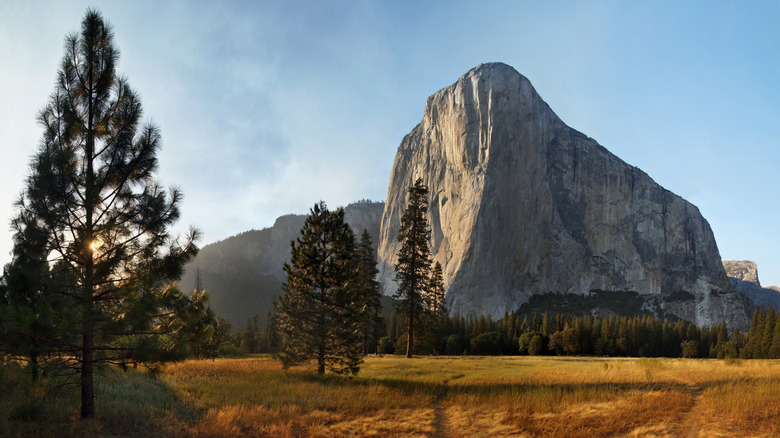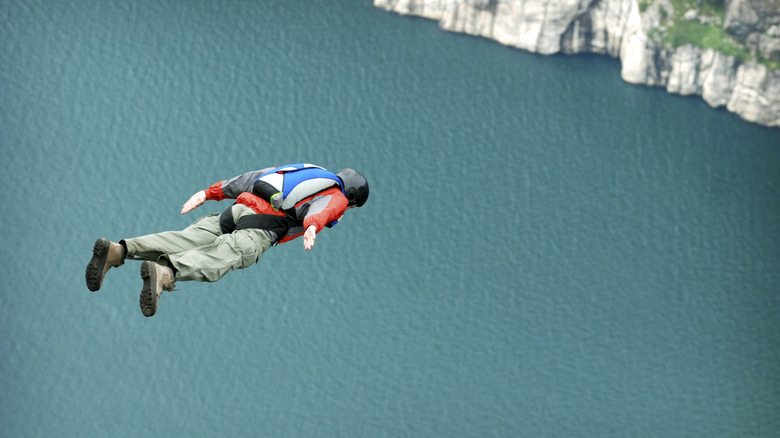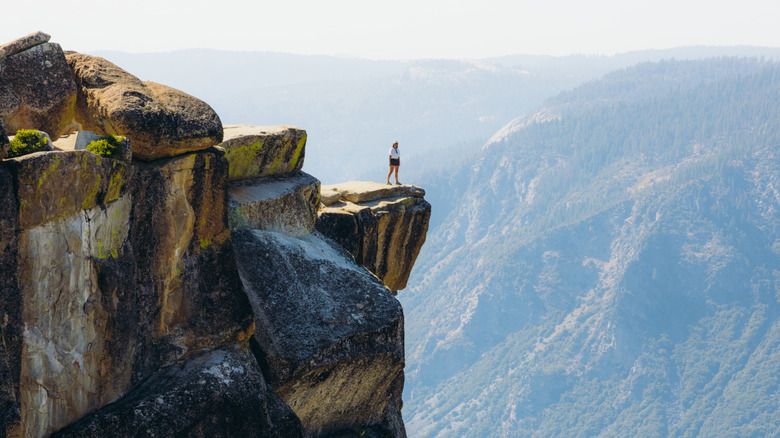Clueless Tourists Are Doing Dicey Things In Yosemite During The Government Shutdown (And It's Threatening Lives)
"When the cat's away, the mice will play," says the age-old adage. Only in this case, the cat is the U.S. federal government, and the mice are reckless national park visitors. As we enter week three of a government shutdown with no foreseeable finish, a growing question looms: What happens to our national parks when the government isn't working? The answer, for some, is that the parks become a free-for-all where daredevils and careless tourists can thrive without consequences. Nowhere is this more obvious than in Yosemite National Park, home to the iconic Half Dome as well as El Capitan, one of the most dangerous climbs in America. In just over two weeks, tourists have flooded the un-staffed park — swimming in restricted areas, squatting at the campgrounds, off-roading, climbing Half Dome's cables without permits, and even base jumping from the cliffs.
During the 35-day shutdown of 2018 and 2019, national parks descended into chaos, with litter, vandalism, and illegal activities becoming the norm. In an attempt to avoid a repeat in 2025, former park employees and directors sent an open letter to the government pleading with them to close the parks for protection, a request which went unheeded. On October 1, 2025, when the federal government came to a halt, national parks remained open without staff, most of whom were furloughed.
Very few people remain to remove trash, clean the restrooms, enforce rules, rescue visitors in distress, and do all the essential, unsung maintenance that makes our national parks thrive. Yet instead of being sympathetic to the circumstances and appreciating the fragile opportunity to access these places, many visitors are heedlessly wrecking them. Those that are following the park's rules now not only face the normal life-threatening risks that come with the awe-inspiring natural areas, but they also must navigate an increase in unthoughtful human behavior as well.
Yosemite's stunning but dangerous attractions are risky during the shutdown
BASE jumping — an acronym for Buildings, Antennae, Spans (bridges), and Earth (cliffs) — is illegal in all U.S. national parks and far riskier than skydiving, yet that hasn't stopped thrill seekers from launching themselves off the peaks while no one's around to stop them, a recklessness that's righteously angered some. A Reddit thread has been popping off with "Darwin Theory" jokes and awards. Similarly, on Half Dome, a YouTube video from early October showed permitted climbers cutting in line and urging others to head back down after summiting, frustrated with the crowds. The Half Dome hike's lottery system already has some disturbing issues, and the permit mandate is partly in place because crowds have made the summit too dangerous.
During the first week of the 2025 shutdown, one climber fell to his death while rappelling down El Capitan, but not because of recklessness. Balin Miller, a young and highly experienced climber, accidentally rappelled off the end of his rope and fell to his death just after climbing a difficult route on El Capitan. Unknowingly, someone watching from the bottom was live-streaming, capturing the disaster. The tragedy highlights the seriousness of doing extreme sports in dangerous environments, reaffirmed by a 1999 incident when experienced base jumper Jan Davis fell to her death jumping off El Capitan after failing to deploy her parachute.
Accidents happen even to the most experienced, and rules and safety measures aren't to be ignored or taken lightly — even just forgetting your water bottle on a hike can be dangerous. Tourists who think only about the photo op (or who don't think at all) are far more likely to face trouble. Add to this danger the fact that there are no workers to regulate potentially risky behaviors or immediately provide rescue services, and you've got a recipe for disaster.
Winter approaching only makes the risks greater
For now, Yosemite and all other national parks remain open, but as winter approaches and worsening weather conditions loom, danger to unheeding tourists increases further. Cold weather, rapid temperature drops, snow, ice, and gusting winds all make it more challenging to tour the national parks, and monitoring and rescue teams can be limited. With no end to the government shutdown in sight, the staffing shortage at U.S. national parks is likely to continue. Casual tourists and daredevil thrill-chasers alike should exercise caution and stewardship when visiting the parks.
Trees and wildlife don't care whether you're getting a paycheck or not, and we have as much of a responsibility to be good stewards of our parks as the employees. Base jumping is banned because it's dangerous, and climbing Half Dome without a permit is still illegal. Trashing one of America's most iconic landscapes isn't just thoughtless — it's dangerous for everyone, whether Big Brother's watching or not, and naughty national parkgoers are going to ruin it for the rest of us. As Taylor Swift once crooned, "This is why we can't have nice things, honey." And we won't, if it's all wrecked while the government's slacking off.


